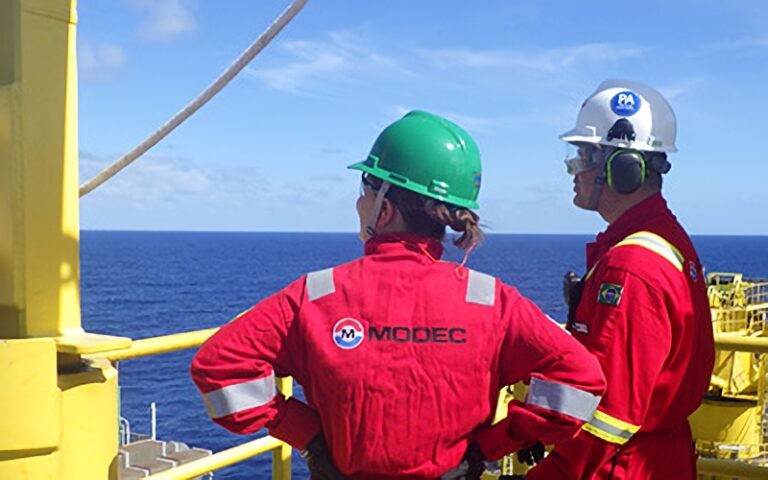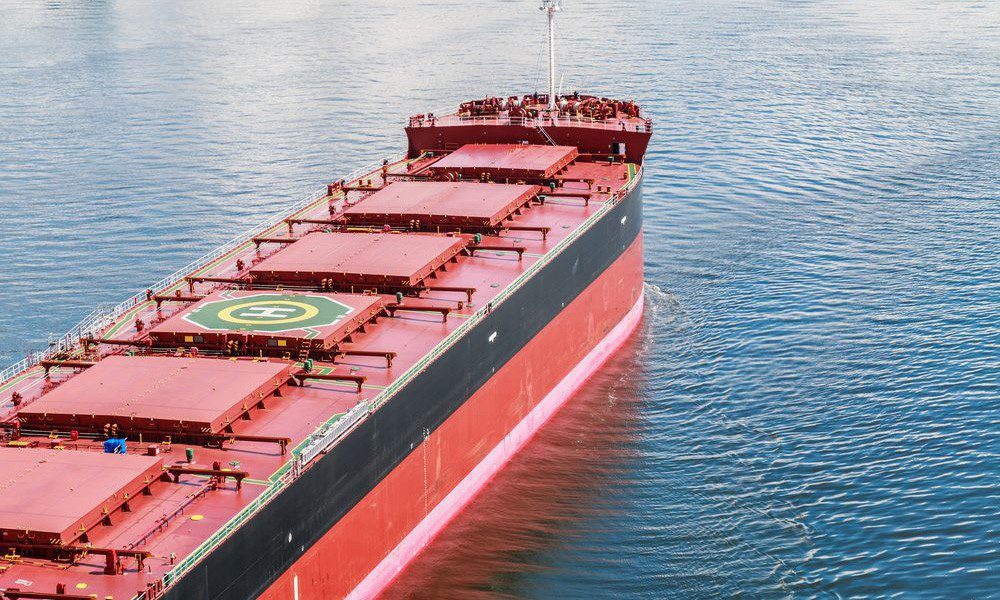Two Japanese players, MODEC and JGC Corporation, an overseas EPC operating company of JGC Holdings Corporation, have wrapped up a project aimed at measuring and quantifying emissions of methane and other greenhouse gases (GHG) from two floating production, storage, and offloading (FPSOs) off the coast of Brazil. This is said to mark a new first for Japanese companies.
 Illustration; Source: MODEC
Illustration; Source: MODEC
Aside from carbon dioxide emissions, MODEC’s project with JGC also addresses methane, nitrous oxide, and HFCs, which are said to have a very high greenhouse effect. MODEC disclosed in its ‘Mid-term Business Plan 2024-2026’ that one of the initiatives under ‘Vision 2034‘ was to achieve the smallest carbon footprint alongside safety and high uptime. As a first step in decarbonizing its core FPSO business, the Japanese firm is involved in measuring and reporting FPSO GHG emissions.
On the other hand, JGC Corporation is engaged in mitigating GHG emissions from oil and gas production facilities, in part, by leveraging technical engineering expertise and extensive plant construction experience to provide HiGHGuardGHG emissions measurement service for methane and other GHGs using the MRVmethodology.
Furthermore, MODEC and JGC Corporation decided to combine their strengths to implement a project aimed at accurately identifying methane, nitrous oxide, and HFC emissions from FPSOs, enabling the duo to tuck a new milestone under their belts, as this is perceived to be the first time that Japanese companies have gained precise insights into the amount of major GHG emissions from methane, nitrous oxide, and hydrofluorocarbons (HFCs) from active FPSOs.
Two on-site measurement methods employed
The emission quantification of the three GHGs was undertaken from July to September 2023 at two MODEC-chartered FPSOs off the coast of Rio de Janeiro. As methane emissions tend to vary widely from facility to facility and desktop calculations with common coefficients are not accurate enough, MODEC and JGC selected two methods of on-site measurement: a bottom-up approach using hand-held sensors and infrared cameras, and a top-down approach using drones.
While the bottom-up approach measures approximately 15,000 potential methane emission points in the FPSO, the latter approach captures the methane potential of plant-wide emissions from flying drones around the FPSOs. The duo claims that the methodology meets the requirements of levels 4 and 5 in the reporting framework established by the Oil & Gas Methane Partnership 2.0 (OGMP 2.0), an international methane emission mitigation program.
Thanks to this, project results show the determination of methane and other GHG emission levels with much greater precision than conventional desktop calculations, enabling the establishment of a reliable methodology for measuring methane emissions by combining multiple measurement technologies, and identification of individual methane emission points on FPSOs, with results leading to specific emission prevention measures.
Moreover, MODEC and JGC underline that the verification of the measurement results confirms the combination of the two approaches enables quantification of GHG emissions with much greater precision than conventional desktop calculationsusing common emission factors, thus, the results are considered to be highly reliable from an international standpoint. MODEC intends to improve the precision of GHG emissions calculations further and expand the scope of emissions data disclosure.
As a part of its charter business, the FPSO owner and operator will also create value for its clients by providing emissions quantification services that are compliant with frameworks such as OGMP 2.0 and requiring minimal effort in the field, as well as additional services such as planning and implementation of emission reduction measures.
Measuring methane at an FPSO; Source: MODEC
“Improved FPSO design and operation, achieved through the application of new technologies discovered and proven through R&D and other methods, will also reduce the carbon intensity of MODEC’s FPSO services and contribute to decarbonization of the global energy supply chain,” underlined the Japanese firm.
The company’s compatriot player, JGC Corporation, is set on stepping up the reduction of industrial methane emissions and other GHG emissions, planning to apply project results to provide reliable measurement methods, emission control measures, and other services as a packaged solution.
The Japanese firm operates a facility for evaluating methane emission measurement technologies at the R&D center in Ibaraki Prefecture in Japan, thus, it aims to leverage this facility and work with sensor manufacturers domestically and internationally to advance partnerships.
IPCC estimates show methane and nitrous oxide have global warming potentials about 28 and 273 times higher than CO2 over 100 years, respectively. With this at the forefront, more than 150 countries are participating in an initiative to reduce methane emissions, called the Global Methane Pledge, launched at COP26 in November 2021.
MODEC is working on several new FPSO projects. Earlier this year, the firm cheered the first steel fabrication milestone in the construction of its new FPSO destined to work on an Equinor-operated pre-salt gas and condensate project off the coast of Brazil.





